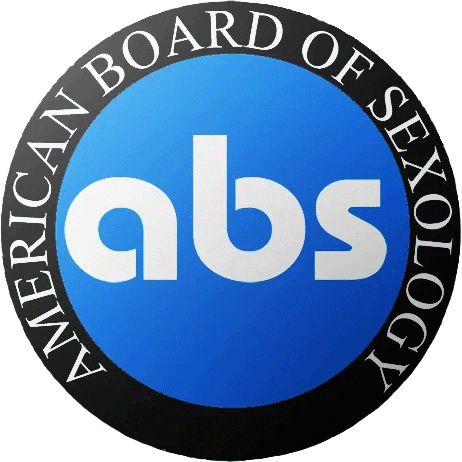If there’s one throughline to every media-produced sex scene I’ve ever seen, other than impressively bouncy…hair… it’s that both parties are immediately ready to get it on. No pep talk, foreplay, or fantasy needed.
As sex coaches, we know how detrimental this has been to our society as a whole, and the goliath-sized pedestal it has put our sex drives on. But what if I told you that science says sex is not actually a drive.
In the book Come As You Are, sex educator and researcher Emily Nagoski, Ph.D., introduces us to a profound look at the truth about how our bodies respond to the pings of sexual desire. As it turns out, these responses are not created equal in everyone. This information could be liberating to those who feel trapped in the tropes of how sexual responses are supposed to look and feel.
In this article, we will look at the science behind our sexual responses, why labeling it a “drive” can be damaging, and how teaching your clients about response cycles can release them from the confines of the performance of arousal.
Science Says: Sex Is Not A Drive
Each of us holds within us a network of alert systems whose sole purpose is to keep us alive.
These look like your tummy rumbling when you’re hungry, shivering when you’re cold, sweating when you’re hot—all of these are “drives” designed to help your body self-regulate as a means of survival.
When Nagoski states “sex is not a drive,” she means that, even at our most dire moments of unmet desire, we won’t die without sex. Lusting is not a means of survival.
Instead, sex is an incentive-based response. When we see, hear, or think of something that turns us on, our desire wheels begin churning—we are motivated toward that feel-good climax that’s to come: our orgasm.
There’s a reason humans have mused about orgasms for centuries—they amplify our overall well-being. But they don’t keep us alive.
Nagoski gives us a good way to differentiate between the two:
Drive = survive
Incentive = thrive
So then what is our desire if not a drive?

Photo by Diva Plavalaguna from Pexels
In the Sex Coach U Core Certified Sex Coach training curriculum, we learn that the female and male response cycles are not the same. While historically, the female sexual response was considered a mirror image of that of the male response, it is actually a response cycle all to its own.
The female response cycle often toggles between the desire and arousal stages until both her body and her mind are warmed up and ready to go.
She may need much more incentive to catapult herself from desire to arousal and into the next stage: emotional and physical satisfaction.
But it gets more detailed than that. Nagoski further outlines two different types of desire response.
The first is the one we touched on in the intro: you know the one where both partners are fully aroused and ready for penetration at any given moment. This is called the spontaneous response.
And while 75% of men belong to this response category, only 15% of women experience spontaneous desire.
For individuals that fall into this category, getting turned on can be as simple as making steady eye contact with a hottie on the subway, or reading a sexy text from a lover. Sometimes these are also the individuals for whom a hot-and-heavy romp is a form of stress relief.
The second is what Nagoski calls responsive desire, and what I will be referring to as contextual desire. This would be the individual that needs a little more context than just a passing sexual thought to become aroused.
For these individuals, stress, surroundings, and their backgrounds and beliefs about sex can play a heavier hand in how easily they become aroused.
[You might also like: “Understanding Low Sexual Desire in Women”]
Both sexual response styles are completely healthy, and normal, but what is most helpful is to aid your clients in understanding their own response style so as to best empower and amplify their pleasure.
Why Distinction Matters
When we function from a belief that sex is a drive or that all sexual responses should fit into the mold of the spontaneous response, we send the message that anything outside of this is dysfunctional, and we set ourselves and our clients up for failure.
Further, when we treat desire like a survival response, we justify the actions taken in the name of survival. You could see how, by believing it to be a necessity to live, we would put it on a pedestal, something to be attained or won at any cost.
But it doesn’t have to be won, it can be anyone’s as long as they understand the ins and outs of their desire response!
How This Can Benefit Your Clients
For a client who has been reprimanding their own body for years for needing a little more time to get in the mood—I’m sure you can imagine the relief that might wash over them when they hear about contextual response for the first time.
For partners with mismatched desire responses, you could be providing them with the key needed to unlock their best sex yet.
For clients with contextual desire, it could be important to reflect on what their incentives might be—the moments in which their desire response is a hard red light, and those when it’s all green is go!
This self-reflection will aid them in understanding what kind of context could push them over the edge and right into the arms of pleasure.
For some, it may look like making time for uninterrupted affectionate touch, or a few minutes of sensual massage without the pretense of going all the way. This can allow them to ease into a place where their brain and body can sync without external pressures. Potentially, and ideally, this will lead them to feel more connected to their partner, and thus aroused.
While we may never succeed in re-writing the way media portrays our sexual responses, or how the greater population refers to sex as a drive, we as coaches have the power to validate our clients’ sexual experiences one at a time.
By offering them a nuanced understanding of different desire responses, you’re equipping them with the tools and empowerment needed to develop a new outlook toward their sexual selves and future sexual interactions.
Curious about training to become a Certified Sex Coach™? Join the next live Info Session to meet the SCU team and participate in a live Q&A!







